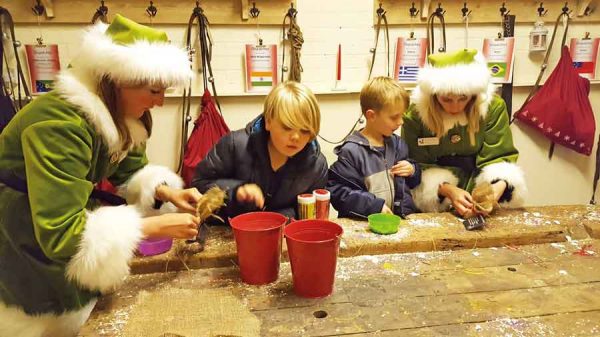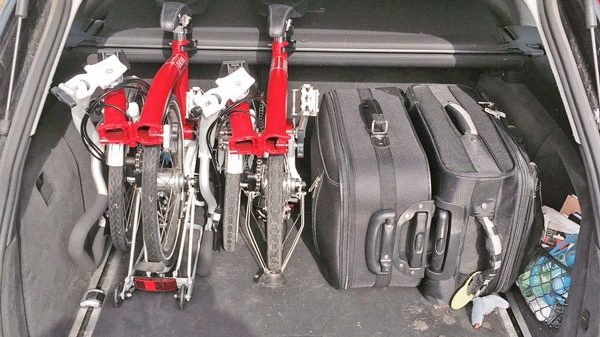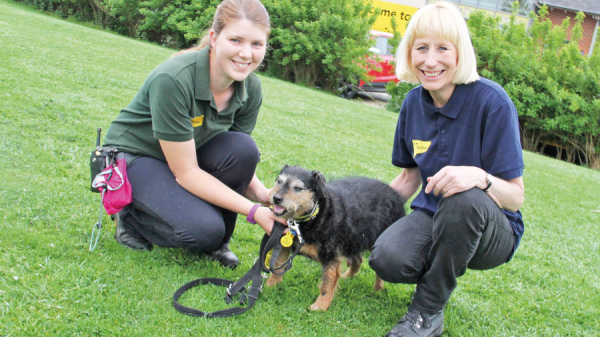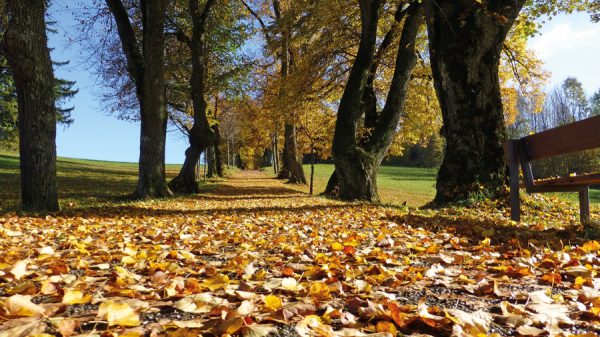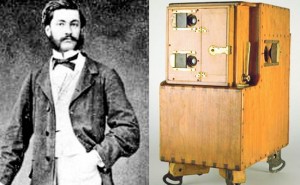In the one hundred and twenty five years since those first moving images were recorded, the world of the cinema has seen many changes. In its infancy there were the ‘silent’ actors and actresses. Charlie Chaplin, Buster Keaton, Mary Pickford and a host of other names have graced the silver screen. From the first feature length motion picture with sound, ‘The Jazz Singer’ in 1927 starring Al Jolson, to the computer generated images of the late twentieth and twenty-first century.
In Leeds centre there were several built. ‘The Plaza,’ formerly the Assembly Rooms on New Briggate, opened as a cinema in 1907. The opening picture showed ‘Little Tich’ the music hall comedian. ‘The Paramount,’ later called ’The Odeon’ on the Headrow opened in 1932, with the film “The Smiling Lieutenant” starring Maurice Chevalier. ‘The ABC on Vicar Lane opened as ‘The Ritz’ in 1934, and its first showing was “Those Were the Days” starring Will Hay.
I lived near to Cross Gates where there were two, ‘The Picture House’ opened on August 5th 1920 seating eight hundred. The first film to be shown was “Master of My Fate” with Murrtoe Sailsbury. The cinema kept this name until 1938 when it was refurbished in the art-deco style and renamed ‘The Ritz.’ It showed its last film in May 1965, “Hell to Eternity” starring Jeffrey Hunter and singer Vic Damone. In the 1950s and early 60s, it was a treat to go see a film here and at ‘The Regal’, and then have a bag of ‘crinkle cut’ chips from nearby Marshall Street.
The Regal cinema opened its doors on November 16th 1936 having taken just under seven months to build with a seating capacity of fifteen hundred. Its first film was “Strike Me pink” starring Eddie Cantor and Ethel Merman. On the 11th of January 1964 it showed its last film, the classic, “The Longest Day” which starred many famous names including John Wayne, Robert Mitchum and Richard Burton.
There were numerous other cinemas all over Leeds. ‘The Regent’ in Torre Road, ‘The Princess’ on Pontefract Lane, ‘The Lounge’ in Headingley is gone, but ‘Cottage Road’ is still open. Kirkstall had ‘The Imperial,’ Dewsbury Road ‘The Crescent’. ‘The Hyde Park’ on Brudenell Road is still going strong.
The ‘golden age’ of the movies has gone. Many local cinemas of the old days closed and made way for ‘bingo’ halls, and television was also blamed for their demise. Now there are cinemas with several screens in large complexes. They don’t seem to have the atmosphere of the old ‘flicks’ but I guess that’s progress.
Memory Lane
Last month we invited readers to share their memories of going to the pictures here are a selection of them and we take a look at Cottage Road & Hyde park cinema’s that are still open today.
Cottage Road Cinema
Cottage Road cinema opened in July 1912 as the Headingley Picture House, having being converted from a motor garage built in 1908. No doubt local residents would have been pleased with the change of use from a garage- it was created for the sons of the wealthy Kirk family who liked to race their motor cars down Cottage Road at a break neck speed of 20mph! This was a time when cars were noisy, smelly contraptions and the locals would have been very upset to have the young men speeding up and down frightening their horses. John Kirk died in 1908 and the four brothers all moved from Leeds over the following years. This left the building available for redevelopment by the founders of the cinema.
George Reginald Smith, thought to be the financier of the project and Owen Brooks were the two men behind the creation of the Headingley Picture House. Brooks was an early cinema pioneer who made his first film of Boar Lane from the top of a horse tram around 1900. He was also in touch with Louis Le Prince who was based in Woodhouse Lane shortly before this time. Brooks was said to be a flamboyant character who built himself one of the very first motorcycles along with a wicker sidecar. Apparently he would speed around Beeston in the motorcycle with anyone daring enough to ride along. In 1904 when vehicle registration first began he acquired the coveted plate U1 which the Lord Mayor’s car still uses today. As both Brooks and Smith were keen motor enthusiasts it is possible that they knew the Kirk brothers and were able to purchase the building through this connection.
Despite local residents worrying about the potential for noise and nuisance the partners were granted a license for the new cinema. The cinema advertised performances every evening except Sunday, a matinee on Wednesdays and two matinees for children on a Saturday. The price for seats at this time was 6 pence or just a little more at 1 shilling for reserved seating. This was an affordable night out for most people and going to the pictures swiftly became very popular. The picture house opened during a time when cinemas were opening everywhere -the two years from 1911 saw Leeds go from having 8 cinemas to 31. Headingley Picture House was the first cinema to open in the rapidly expanding suburb but competition soon arrived with the Hyde Park Picture House opening just 2 years later.
During the early years of silent movies a pianist was employed to play along, enhancing the viewing experience by providing sentimental music for romantic scenes and more dramatic tunes as appropriate to the action currently happening on screen. Mrs Gertrude Lyons, a cashier at the cinema would rush from the box office to the piano for the children’s matinees and was paid £1 a week. In the 1920’s the cinema had its own orchestra, and was then adapted for sound in 1931 with the arrival of the “talkies”. The last silent movie shown at the cinema was ‘Wild Company’ and the first talkie was ‘On Approval’.
The Cottage Road Cinema has seen many changes over the years in ownership, refurbishments and technological advancements. It celebrated its Centenary in 2012 and still offers a varied programme today including a classic film night which its patrons can enjoy in the traditional setting including vintage film advertisements. Along with the Hyde Park Picture House, Leeds is lucky to be home to two such historically rich cinemas.
Hyde Park Picture House
The Hyde Park Picture House opened on the 7th November 1914, to the public as a cinema with a small advert in the Yorkshire Evening Post describing it as the “cosiest cinema in Leeds”.
The first film ever shown at the picture house was described as a ‘patriotic drama’ titled Their Only Son followed a week later by An Englishman’s House aptly labelled an ‘invasion drama’. During 1914 over 6000 men from Leeds had signed up and the Picture House was an essential place for people to keep abreast of the events of World War 1, as they showed regular news bulletins and war footage, as well as the more frivolous films to boost morale.
The cinema carried on over the decades despite two World Wars and numerous other issues. They remained up to date and relevant with a conversion to sound in the 1920’s, enabling the Picture House to provide the new “talkies”. The arrival of ‘super cinemas’ in the 30’s and the development of TV in the 50’s, as well as the inventions of video, DVD and internet are all hurdles that the Hyde Park Picture House has overcome since it opened and is still going strong to this day.
Leeds City Council took over the cinema in 1989 to prevent its closure and still own it to this day via their trust Leeds Grand Theatre and Opera House Limited. This trust is dedicated to preserving the buildings and securing the future of The Grand Theatre, the City Varieties Music Hall and the Hyde Park Picture House. The grade II listed Edwardian building still features the original Edwardian balcony and outdoor ticket booth as well as being the only gas lit cinema still in use in the UK. Some changes have been made over the years however, with the kiosk replacing the old fireplace and the original seating capacity of 400 being reduced to 275 with the introduction of comfier seating.
Today, the single screen cinema provides an eclectic mix of mainstream, classic and art house films for their customers and is sure to be around for many more decades to come as a much loved Leeds venue.
Memories Of The Queens Picture
House Beeston
1935 and the following years that precluded my father and I would often go to the Queens picture house on Beeston Road.The films were all in black and white,we would see Charlie Chaplin,Fred Astaire and Ginger Rodgers amongst other great stars of that era.
1938 1 was 17yrs old when my school friend Betty and I went to the pictures,we queued for long time to get in downstairs where it was cheaper. However as we were reaching the front of the queue they announced it was full and the only seats left were upstairs in the circle.We put our money together and managed to get in.This turned out to be the day I met the love of my life,already seated were two young men Bernard and Norman they moved to let us in.Betty sat next to Norman and I sat next to Bernard.After this initial meeting we went out regular as a foursome.A few weeks later Bernard asked me if I would like to go to the Ritz pictures in Leeds town centre just me and him, I think it was to see Robin Hood starring Errol Flynn.We were now courting and went to the pictures regular,holding hands on the back row.We enjoyed cow boys films with John Wayne,musicals and Gone with the Wind starring Clarke Gable and Vivienne Leigh.The films were now in colour they were a lot nicer.
1940 sadly war broke out and Bernard along with others was called up.He was sent to Burma and was away 6yrs,We remained in touch by letter and then got engaged by proxy.Towards the end of the war he became very ill and spent 18weeks in hospital.When he was discharged from the hospital the war was over.He returned home,still not fully recovered,he was very weak and extremely thin.
1946 we got married and had a daughter.Bernard was still not fit enough to work, so therefore I had to work.I got a job at the Queens picture house as a cleaner in the morning.Mum looked after our daughter and in the evening Bernard looked after her as I went back to be an usherette.There were quite a few usherettes seeing people to their seats and in the interval selling ice creams.
These were hards times.Bernard eventually recovered and we got through it.We went on to have a second daughter and a son.
Bernard and I remained happily married for 67 yrs until sadly he passed away in 2013.One of the songs he would always sing to me was from the film Naughty Marietta (1935) starring Victor Herbert and Jeanette MacDonald’ Ah Sweet Mystery Of Life ‘and my life was always complete with Bernard, I am so glad we met in the circle at the Queens that day.
Joyce from Leeds
Memories of The Ritz & Regal Picture
House Crossgates
As an 11 year old girl back in the late 1930’s, the cinema was a big part of my life. I would go to the children’s matinee every Saturday afternoon either at the Ritz or the Regal, both in Crossgates. Also my brother Albert was First Projectionist at the Shaftesbury cinema on York Road so I would occasionally go there too. Usually, these outings were with my sisters, and as I got a little older I would go with my friends.
The cinema was a relatively cheap afternoon out back then. The film was 1 penny and for popcorn or ice-cream 2 pennies. For the price of an old penny you were entertained by an organist as you took your seats, then there would be the WW2 news reel followed by a short comedy such as Charlie Chaplin or Buster Keaton before the main film started.
These short films lasted around half an hour and were very funny. I think they were intended to cheer you up a little after the news reel. One film I remember watching was “For Whom The Bell Tolls” starring Ingrid Bergman, and I also used to love Bing Crosby in “White Christmas”.
My weekly visits to the cinema were a fun time – I remember if we saw someone we knew we would throw popcorn or peanuts at them. Everyone used to do it but sometimes the usherettes would tell us we would have to leave if we were too rowdy! On the way home we would often get fish and chips from Coes, only 4d back then. These are very fond memories which I will always treasure.
Madge Longbottom from Crossgates
Memories of The Kippax Picture House
My first memories of going to the ‘Flicks’ as we called it back in 1946, was at Kippax picture house.
The first two rows of seats were made of wood and uncomfortable with no padding on them.It use to cost one old penny. The films were in black and white in those early days.
The British movietone news and a short comedy would be shown before the main feature film usually ‘The Three Stooges ‘or ‘Leon Erol ‘who was married to a big bossy woman and portrayed a man under the wife’s thumb.
There would be regular breakdowns and if the repair was taking too long to sort out, people would start booing and stamping their feet. The lights would be turned on to quieten everyone down.
It was just after the second war, people and the country were still trying to recover, with rationing still in place. We had some great times and the pictures provided uplifting entertainment.
Kevant Coates from Garforth
Memories of Various Picture Houses
In Leeds
I spent much of my early life in the Harehills area. Born in 1943, along with my Mum and Dad, I lived with my maternal Grandma and Granddad in a large house.
I was lucky in these early years as both my Gran and Mum would in turn take me to the cinema. In the Harehills area The Hillcrest and The Shaftesbury were the favoured ones as they were only a short walk away. The only film I can remember seeing at either of these was Colt 45 at The Shaftesbury. The Regent on Torre Road was also a place we quite often visited, and The Clock at the bottom of Easterly Road.
My Gran would often take me into the city centre to The News Theatre which at that time was in the Queens Hotel building. This cinema always had a programme made up entirely of short films, cartoons and Pathe News. The films were always short I guess because it was a place to kill time whilst waiting for a train, it would have been pointless showing features as most people would not see the end.
Other city centre haunts were The Gaumont, The Majestic, The Ritz (The ABC) and the Odeon. The Odeon is also where my ex- wife Val worked in the 1970s when it became a multi screen, my Dad also worked there as a commissionaire for a short time before WW2 when it was called The Paramount. In the 1960s it was the place to go to see Pop and Rock n’ Roll shows, I saw many big names there.
When I got older I was of course able to go to the cinema with my friends. From Becketts Park on a Saturday we would take the short walk to the Abbey Cinema, Kirkstall Road, where for sixpence (2.5p) you were treated to several cartoons, a feature film and a serial, Flash Gordon etc.
Also just within walking distance was The Cottage Road and The Lounge, a bus ride away were The Hyde Park, The Lyceum, The Embassy and The Burley Picture House (The Burley Bug Hutch).
From Becketts Park when in our teens we also would walk to Horsforth to The Imperial on Town Street and The Glen Royal New Road side.
Something that sticks in my mind were the staff frequently walking round the aisles with large manually operated air fresheners to fight the less pleasant odours generated by the soap shy cinemagoers.
These days I very seldom visit the cinema, I find many people behave as though they are in their own front room, engaging in loud conversations etc, years ago they would have been thrown out by the manager or an usherette.
Ron Davies from Leeds

